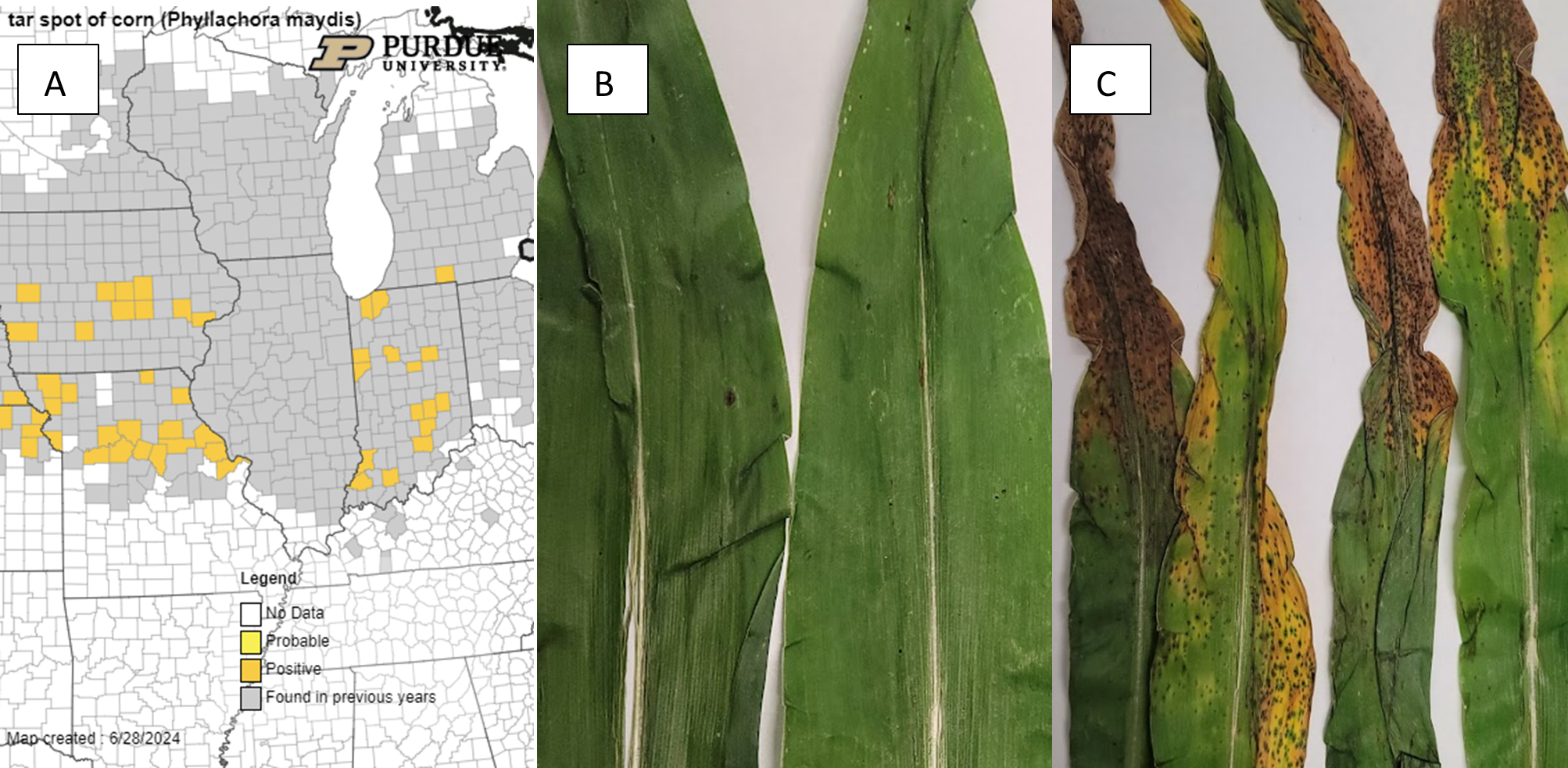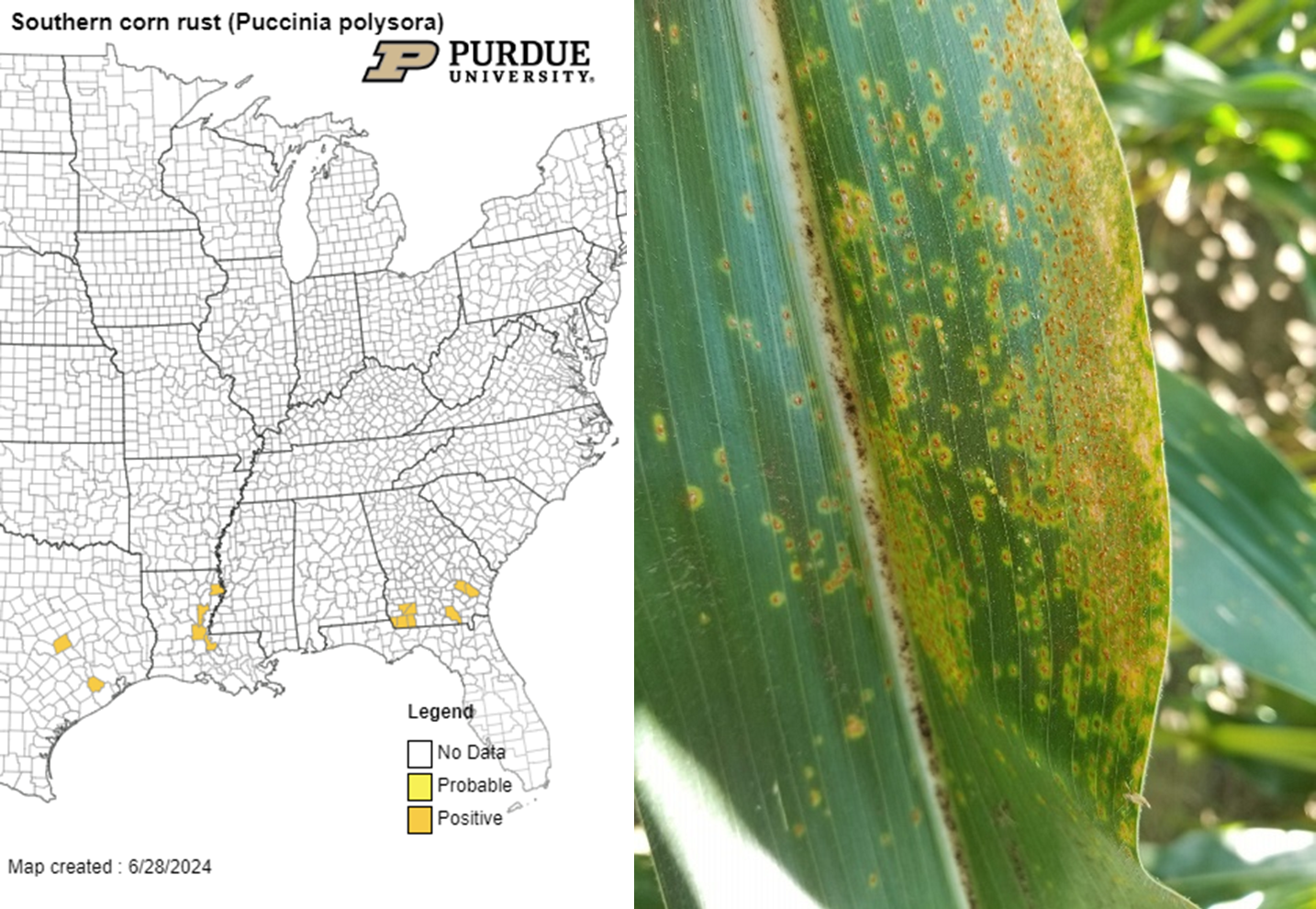We are starting to see common diseases in the lower canopy of corn, as we were out scouting this past week as early planted corn has begun to tassel in Indiana. A few diseases that I have seen and samples sent into the Purdue Plant Pest Diagnostic Clinic (PPDL) included gray leaf spot, tar spot, and common rust in corn. We are tracking the activity of tar spot (map-Figure 1) and southern rust (map – Figure 2). On the tar spot map, you can see gray areas where we have detected the tar spot in past years. In Indiana, we have confirmed tar spot for this season in 15 counties as of June 28, 2024. These include Porter, LaPorte, Benton, Warren, Carroll, Tipton, Grant, Johnson, Shelby, Rush, Bartholomew, Jackson, Knox, Gibson, and Dubois counties. Tar spot is at a low severity in most samples, but we have received a few that the disease is increasing in the lower leaves and moving up into the mid-canopy in some of these fields, but we suspect with the current weather conditions the disease will continue to be detected in fields in Indiana. We will continue to monitor and provide updates – please keep sending us samples.

Figure 1. June 28, 2024 map of tar spot activity (A), and images of tar spot on corn in both the mid (B) and lower (C) canopy from samples submitted to the Purdue Plant Pest Diagnostic Lab (PPDL). Map source: https://corn.ipmpipe.org/tarspot/

Figure 2. July 16, 2021 Southern corn rust map. Image of southern corn rust.
As for southern rust (Figure 2), it has yet to be detected in Indiana. We have seen some common rust, so it is important to keep and eye out and send samples in the PPDL if you suspect southern rust.
Continue to scout your field to determine if any of these diseases are present. Gray leaf spot, northern corn leaf blight and tar spot are the diseases that are most commonly managed by fungicides in Indiana. For these diseases fungicides applied at VT-R1 are most effective at preventing yield loss. Scouting will help determine the level of disease pressure in a field and help you make an informed decision. See link below for fungicide efficacy tables.
We just released a tar spot specific article on “Fungicide Application Reminders to Optimize Management of Tar Spot and Return on Investment in Corn” on Crop Protection Network. I suggest you check it out here https://doi.org/10.31274/cpn-20240618-0. I also made a brief video talking about fungicide timing for tar spot based on our research https://www.youtube.com/watch?v=qObD-ld9G88.
To make a decision for applying a fungicide there are four things I consider –
- Disease risk in a field – do you have a previous history of the disease
- Current disease activity – do you find the disease in the lower canopy while scouting
- Weather conditions – will there continue to be favorable weather moisture and rain for foliar diseases? Check out the Tarspotter or Field Prophet Apps
- Return on investment – will the yield protected by a fungicide cover the additional cost of the application?
For fungicide recommendations please see the 2024 fungicide efficacy tables developed for corn: https://doi.org/10.31274/cpn-20190620-002


